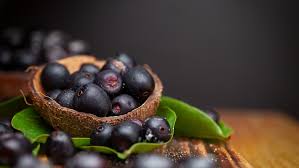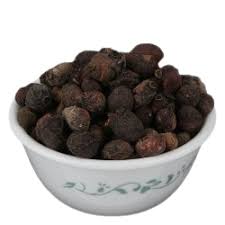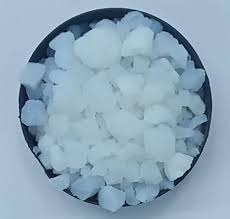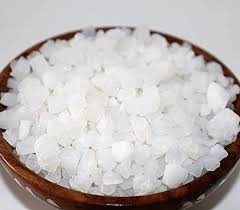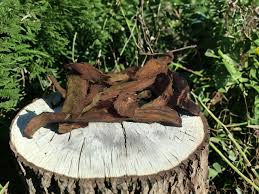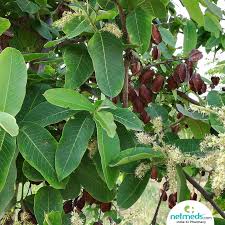
Amla for Children: Benefits and Safe Usage Tips
Children’s health is a top priority for every parent. In a world filled with processed foods, environmental toxins, and frequent infections, ensuring the wellness of kids naturally is more important than ever. One of the most powerful yet gentle superfoods that nature offers is Amla, also known as Indian Gooseberry. Rooted in Ayurvedic tradition and supported by modern science, Amla is packed with nutrients that promote overall growth, strengthen immunity, and improve digestion in children.
But how can Amla be introduced safely in a child’s routine? What are the right forms, dosages, and precautions? In this article, we explore the incredible benefits of Amla for children and provide practical tips for its safe use, making it easier for parents to include this powerful herb in everyday wellness plans.
Long Description
- Why Amla is Ideal for Children’s Health
Amla is widely known in Ayurveda as a Rasayana, or a rejuvenating herb. It has a unique ability to balance the body’s systems while delivering essential nutrients. What makes Amla suitable for children is its natural composition—free from chemicals, easy to digest, and gentle on the stomach.
Its high Vitamin C content, antioxidant properties, and anti-inflammatory effects support everything from immunity to brain development.
- Nutritional Profile of Amla: What Makes it a Superfood for Kids?
Vitamin C – Enhances immunity, builds collagen for healthy skin and bones
Iron – Supports red blood cell production and energy levels
Calcium – Essential for growing bones and teeth
Fiber – Aids digestion and improves gut health
Antioxidants (Emblicanin A & B) – Protects cells from damage
B-complex vitamins – Boost brain function and cognitive performance
This balanced nutrient composition makes Amla a safe and effective supplement for physical and mental growth in children.
- Top Benefits of Amla for Children
A. Boosts Immunity and Prevents Frequent Illnesses
Children are especially vulnerable to seasonal changes and infections. Amla strengthens the immune system and reduces the frequency of:
Coughs and colds
Fever and viral infections
Respiratory allergies
Its antibacterial and antiviral properties make it a natural immune booster.
B. Enhances Digestion and Appetite
Children often face issues like constipation, gas, and irregular appetite. Amla helps by:
Stimulating digestive enzymes
Improving nutrient absorption
Regularizing bowel movements
It’s especially helpful for fussy eaters or children with weak digestion.
C. Supports Brain and Nervous System Development
Amla contains bioactive compounds that nourish the nervous system, enhance concentration, and reduce mental fatigue. It supports:
Memory retention
Alertness and focus
Better academic performance
Amla can be very beneficial during exams or when children are under study stress.
D. Promotes Healthy Skin and Hair
Vitamin C is vital for collagen synthesis, which supports:
Clear, acne-free skin
Hair strength and shine
Faster wound healing
Amla can help treat minor skin irritations, rashes, or early signs of dandruff in growing kids.
E. Strengthens Bones and Teeth
Calcium and Vitamin C from Amla work together to:
Improve bone density
Strengthen teeth
Prevent growth-related deficiencies
It’s an excellent addition to diets lacking in dairy or green vegetables.
F. Balances Mood and Energy
Amla helps regulate metabolism and reduces fatigue. It also calms the nervous system, supporting better:
Sleep patterns
Mood stability
Activity levels during the day
- Safe Ways to Give Amla to Children
Depending on age, you can offer Amla in different forms: - Fresh Amla Juice
For children above 5 years
Mix 1–2 teaspoons of Amla juice in water
Add honey or jaggery if needed
Give 3–4 times a week
- Amla Candy
Suitable for kids above 3 years
Dried and sweetened Amla (natural, preservative-free)
Makes a healthy snack alternative
Improves immunity and taste preference
- Amla Murabba
Best for kids above 6 years
Preserved Amla in honey or natural syrup
Promotes digestion and boosts energy
1 piece a day after meals
- Amla Powder (Churna)
For children 7 years and above
¼ to ½ teaspoon mixed with honey
Can be added to warm water or milk
Best taken in the morning
- Chyawanprash
Made primarily from Amla
1 teaspoon daily with warm milk or water
Recommended for children above 2 years
Supports immunity, memory, and strength
- Right Dosage of Amla for Children
Age Group Recommended Dosage (per day)
2–4 years ¼ tsp Chyawanprash or Amla Candy (once daily)
5–8 years ½ tsp Amla juice or powder (3–4 days/week)
9–12 years 1 tsp juice or ½ tsp powder (daily)
Note: Always consult a pediatrician or Ayurvedic practitioner before starting new supplements.
- When and How to Give Amla to Kids
Best Time: Morning, on an empty stomach or after breakfast
Form: Juice, powder, or candy—whichever suits the child’s taste and digestion
Consistency: Long-term use shows the best results
Complement With: Warm water or honey for better absorption
Avoid giving Amla with milk, very hot foods, or processed meals.
- Precautions While Giving Amla to Children
Ensure Amla is organic and preservative-free
Do not exceed recommended dosage
Discontinue if the child experiences diarrhea or stomach upset
Avoid giving Amla to children with cold-related sensitivities in winters without balancing herbs like ginger or tulsi
- Ayurvedic Perspective: Amla for Bala (Children)
In Ayurveda, children are referred to as “Bala”, meaning those with tender strength. Amla is considered a sattvic fruit, offering:
Gentle nourishment
Strengthening of Dhatus (body tissues)
Long-term immunity building
Amla is often used in Balya formulations, which are herbal tonics specifically designed for children.
- Common Conditions in Kids Where Amla Helps
Frequent cold, cough, and respiratory infections
Weak digestion and low appetite
Skin allergies, rashes, and acne
Early hair fall or scalp issues
Fatigue and lack of energy
Difficulty in concentration and poor memory
- Homemade Amla Remedy Recipes for Kids
Amla-Honey Mix
1 tsp Amla powder
1 tsp raw honey
Mix well and give in the morning
Good for cough, immunity, and digestion
Amla-Tulsi Decoction
1 tsp dried Amla
3–4 fresh Tulsi leaves
Boil in 1 cup water, strain, and give lukewarm
Great for flu, throat irritation, and congestion
Amla-Date Energy Balls
Blend dried Amla, dates, almonds, and ghee
Roll into small balls and refrigerate
Healthy and immunity-boosting snack for kids
Conclusion
Amla is one of the safest and most beneficial natural remedies for children’s health. With its powerful vitamin C content, anti-inflammatory compounds, and rejuvenating qualities, Amla can play a vital role in building immunity, enhancing digestion, improving memory, and supporting overall development in children.
Whether used in the form of juice, powder, candy, or herbal jams like Chyawanprash, Amla can easily be included in daily routines. The key lies in using age-appropriate dosages and natural, preservative-free forms of Amla. When used wisely and consistently, Amla becomes a gentle yet powerful ally in raising healthy, strong, and resilient children—naturally.

